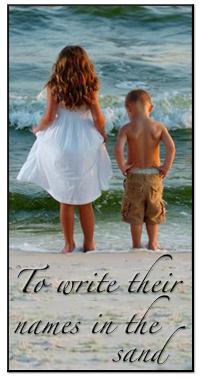I wasn't planning on teaching Tatiana to read at the tender age of 5. I thought that children learned to read when they were a bit older, like 8. Isn't she still supposed to be learning her ABC's? When did all this growing up happen? We went to Lowe's one day about 4 months ago. She asked me what a word on a sign read. I told her "authentic", then she proceeded to read, "Authentic colors for today's lifestyle." I mean, without help. Just matter of factly. Um, ok. I figured it was time for "formal" reading instruction. Several people have recently inquired/questioned/marveled at her reading ability and asked me what my magic reading formula is. No magic here! After some thought, however, I realized that there may be some things that I have done to set her up for success, which I thought I would share. Whether you are schooling at home or not, your child may greatly benefit from some of these suggestions.
1. Reading out loud. A LOT.
We have always had books available since Tatiana was born, even before that, actually. {Rick read The Chronicles of Narnia to Tatiana while she was still in the womb.} Cloth books, board books, lift-the-flap books, textured books. Store signs, menus, sales flyers. Anything! I will pretty much stop whatever it is I'm doing if one of my children wants to read. I value reading that highly. We have made reading stories part of our bedtime routine since T was a toddler. And we still read them today. Anytime of day. Over and over if necessary. And although this is sometimes irritating to the parent, having the books memorized comes in handy for those seasons of sleep deprivation...
2. Talking about letters/words/sounds
We discuss letters and sounds often, at home, out shopping, riding in the car. When she was first learning the letters, we would look for specific letters wherever we were. "Let's look for the letter A!" You could start with helping your child recognize the letters in his name. Then we progressed to discussing words that start with the same sound, like "b". Now we talk about rhyming words, opposites, etc.
3. Tactile letters
Having your child feel the letters reinforces their shape. The famous letter magnets are perfect for this. How about wooden letter puzzles? We also used to have foam letters for the bathtub. Other ideas include having your child trace letters in a pan filled with cornmeal, sand, or pudding (if you're really daring). I also came across this idea recently: write a large upper/lowercase letter on an index card, then laminate the card. Using playdough, have your child roll the dough into a rope then lay it out on top of the card in the shape of the letter. I can't wait til Sienna is old enough for this one. Sounds like fun!
4. LeapFrog Products
I really think LeapFrog products are wonderful! I have personally seen the DVDs, The Talking Letter Factory & The Talking Words Factory, make letters and the sounds they make come to life for Tatiana. I recommended The Talking Letter Factory to another mother and her daughter learned all to recognize all the letters of the alphabet quickly as well. These educational videos really make learning fun & use lots of "word pictures" to make letters and their sounds easy to remember. We have since moved on to the Storybook Factory....
5. Remember that reading is not natural and builds concept upon concept.
Reading is not like talking. You can't just hear someone do it over and over and then pick it up yourself. It takes work. To some children it comes easily, to others it proves to be more difficult. Also, it happens in steps (at least from what I have seen). First your child must be comfortable with recognizing the letters themselves before they can move on to what sounds the letters make. Once familiar with the sounds, they'll be able to start putting one or more sounds together.
6. Computer games
Sometimes animation and games makes learning all the more fun! Two websites I especially like are this one and this one. The second one has activities for all levels of readers.
Remember to relax and be patient. Children will learn to read when they are ready. Don't make them feel bad if they are not as fast to read as their peers or as fast as YOU would like them to be. Give them plenty of opportunities to learn, however, and most of all, make it fun! ;-)
Tuesday, October 10, 2006
Subscribe to:
Post Comments (Atom)








3 comments:
Hi Bec!
What wonderful advise! I printed this post -- I totally agree with reading to them every day. I always make sure I read Jacob a story before he goes to bed -- he loves it!
Talk to you soon! Skyra
Great ideas! We are also big on reading here. It's so cute because Kaitlyn will actually sit down with Landon now and "read" a few books to him. We belong to Children's Book of the Month Club and that is one thing that I will not cut in our budget! I love the idea about the whole playdough thing. Kaitlyn would love that!
I bought tatiana a new Care Bears "easy reader" book at the grocery store today & she was reading the whole way home. I guess I should add: give them lots of books about their favorite topics when they're just learning as it will keep things interesting. I was so AMAZED at the words that she could read like "friendship" and "cried". It was also really neat how if she said a word wrong, she would realize it later in the sentence because things just didn't make sense & she would go back and correct herself. This is such an amazing thing ~ learning to read. I can't believe how God quickens our minds to learn such things!
Post a Comment